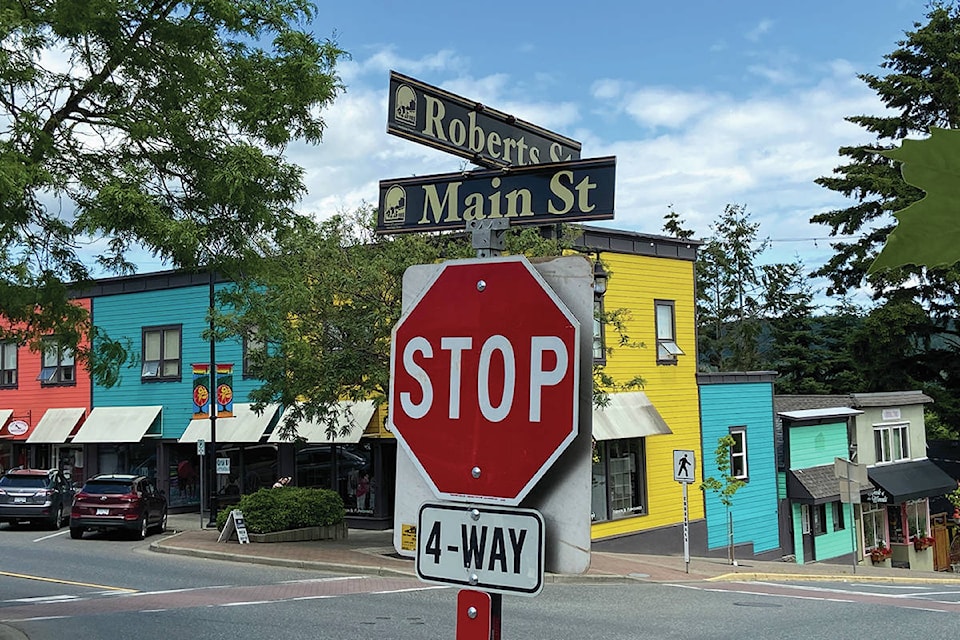When Vancouver Island coal baron James Dunsmuir founded the town of Ladysmith, he was faced with a decision – what should the town be called?
As Dunsmuir laid plans for his town along the shores of Oyster Harbour, the Boer War was raging in South Africa. The conflict fought between the British army and Boers, a group of Dutch settlers in South Africa from two republics: Transvaal and the Orange Free State. A pivotal battle of the Boer War was the Battle of Ladysmith, which began in 1899. The British were garrisoned at the town of Ladysmith, and Boer soldiers encircled the town. This led to a 118-day siege of Ladysmith.
RELATED: Place names have varied cultural roots
When the siege was lifted in February 1900, Dunsmuir was inspired to name his town Ladysmith, after the South African town. Dunsmuir also named several Ladysmith streets after Boer War generals.
Today, several of those streets remain as a prominent feature of downtown Ladysmith. Symonds Street, Warren Street, French Street, Kitchener Street, Buller Street, Gatacre Street, Roberts Street, Baden-Powell Street, White Street and Metheun Street are all named after British Boer War generals.
They serve as a reminder of the history of the Boer War; however, in the context of global protests against racism, the history of these generals is being re-examined.
After the British annexed Transvaal in 1900, Boer commandos began carrying out guerrilla warfare tactics against British-controlled towns and rail lines. To stop this, Field Marshal Lord Frederick Roberts enacted a ‘scorched earth’ policy, and ordered that all farms and homesteads within a 16-kilometre radius of any attack would be burned to the ground.
In late 1900, Field Marshal Horatio Herbert Kitchener introduced more stringent tactics to break the Boer commandos. Kitchener ordered the burning of several towns and farmsteads, regardless of their proximity to an attack. An estimated 30,000 Boer homesteads were burned, which caused a large influx of Boers to concentration camps.
David J. Bercuson, a Canadian military historian and professor of history at the University of Calgary, said conditions in the camps were appalling.
“There was a lot of disease, and starvation. You could say they didn’t know what they were doing, but it doesn’t matter. Anyone who had a fair mind and looked at what was going on there knew that these were atrocities that were being committed,” Bercuson said.
From 1900 to 1902, an estimated 48,000 people died, 20,000 of whom were Black South Africans. Despite the fact that they were not involved in the conflict between the British and the Boers, Roberts pushed to intern Black South Africans to force them into labouring on crops, digging trenches, driving wagons, or working in gold mines.
At the time, white supremacy was prevalent in European society. Roberts is on record as having said, “it is the consciousness of the inherent superiority of the European, which has won for us, India.
Bercuson said it’s likely that most – if not all – of the Boer War generals held racist views.
“What we call British Empire nationalism, which really rose in the 1870s and 1880s, goes side-by-side with a view of white superiority.”
Another Boer War general, Robert Baden-Powell, who is best known for founding the Boy Scouts, has stoked controversy for holding talks with the leader of the Hitler Youth movement in 1937, and for saying that Adolf Hitler’s manifesto, Mein Kampf, was a “wonderful book with good ideas on education, health, propaganda and organization, etc.”
Baden-Powell was also accused of illegally executing an African chief in 1896 during the Zulu War, and stealing food from Black South Africans in Mafeking to feed his own soldiers.
Tim Jeal, Baden-Powell’s biographer, has denied those claims, and stated that Baden-Powell’s quote in support of Mein Kampf was taken out of context.
Recently, statues dedicated to Boer War generals have been vandalized in England. A statue of General Redvers Buller was damaged in the city of Exeter, England; a statue of Baden-Powell was temporarily removed in the city of Poole, England to prevent the statue from being vandalized; and protesters in Kent, England have called for the removal of a statue of Kitchener.
Bercuson argues that regardless of whether a statue is removed or not, the history behind a statue cannot be erased.
“As a historian, my job is to try to reveal the past to the people around me,” he said. “I can’t teach history without it being there. The history is more than putting up a statue to somebody.”
In the original grid plan for Ladysmith, some streets named for Boer War generals, like Colville Street, Wauchope Street, Macdonald Street, and Otter Street were never built.
READ ALSO: Taking Ladysmith’s heritage to the streets
The remaining Ladysmith streets that honour Boer War generals have become a significant part of the history of Ladysmith, B.C.
